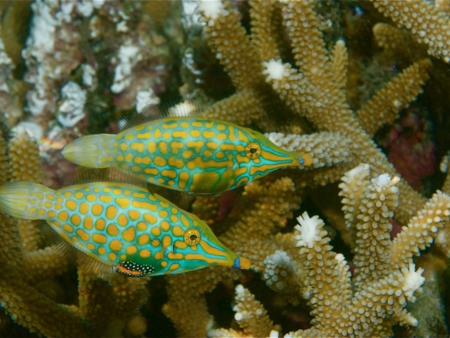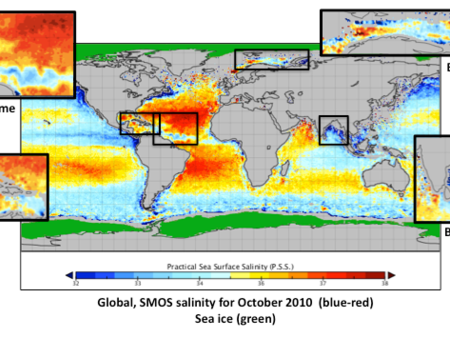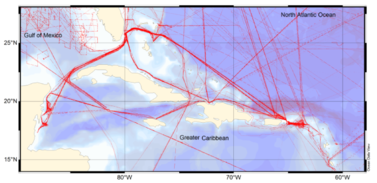Greater Caribbean tropical coral reef and the Amazon plume
At least two thirds of the reefs in this region are threatened from human impacts such as overfishing and coastal development.
They are also under threat by rising ocean temperatures and OA.
The Greater Caribbean Region
The Greater Caribbean Region extends from the Gulf of Mexico to the equatorial Atlantic and into the Caribbean Sea.
The skeleton of a coral is made of the calcium carbonate material aragonite and the growth of their skeletons is reduced by OA. The waters of the Greater Caribbean region are predominantly oligotrophic and similar to the subtropical gyre from which it receives most of its water (Gledhill et al., 2008). Whilst the often shallow water environments of coral reefs can make them a challenging region for EO instruments to collect data close to the coast, the oligotrophic nature of this region and the similarities in water type across the whole region makes this an ideal region for the development of novel products within Pathfinders-OA.
This case study region will also enable us to easily compare and contrast the results from our novel algorithms with the in situ data and outputs collected and generated by the US NOAA experimental Ocean Acidification Product Suite (OAPS, Gledhill et al., 2008), which was based around providing an assessment of ongoing acidification, and monthly monitoring of ΩA and pH, for the Greater Caribbean region.
Greater Caribbean case study region, also showing the location of the Gulf of Mexico. SOCAT CO2 data points (red dots) are also displayed, as an example dataset.
The Caribbean region is of particular interest for monitoring OA because of the potential detrimental impacts on coral species (Kroeker et al., 2013). Indeed numerous studies have shown a net decline in coral calcification rates in accordance with declining calcium carbonate saturation state (Langdon and Atkinson, 2005). The OAPS project utilized NOAA OI-AVHRR sea surface temperature (SST), NOAA NCEP mean Sea Level Pressure (SLP) and NOAA WOA94 sea surface salinity (SSS) data to formulate pCO2 and AT fields over a 1⁄4-degree grid using empirical algorithms. pCO2 and AT , together with the SST and SSS, were used to compute ΩA using CO2sys (Lewis and Wallace, 1998). This region therefore provides an ideal case study not only to develop algorithms representative of a shallow, oligotrophic environment, but importantly to validate and verify the OA products developed from ESA satellite data, as well as from the novel use of SMOS for salinity. The results from this case study will provide an indication of how the algorithm performance would translate to other oligotrophic coral waters (e.g. reef systems in the Pacific Ocean).
The Amazon plume
The Amazon plume, south of the Greater Caribbean, is the largest freshwater discharge source in the world (209 000 m3/sec), and the region has recently been associated with increased hurricane intensity. It can cause sea surface salinity decreases of several PSU many hundreds of kilometers from land, and has an area that seasonally can reach 106 km2.
The plume is typically up a 1 m deep and creates a substantial near-surface barrier layer that inhibits mixing and warms the sea surface temperature (Grodsky et al., 2012). These characteristics make it an ideal test bed for remote sensing algorithms, particularly the SSS sensors of SMOS and Aquarius, which feature a trade-off between spatial resolution and accuracy. Therefore the region provides an ideal test site to evaluate the full capability of the project algorithms and methods.






